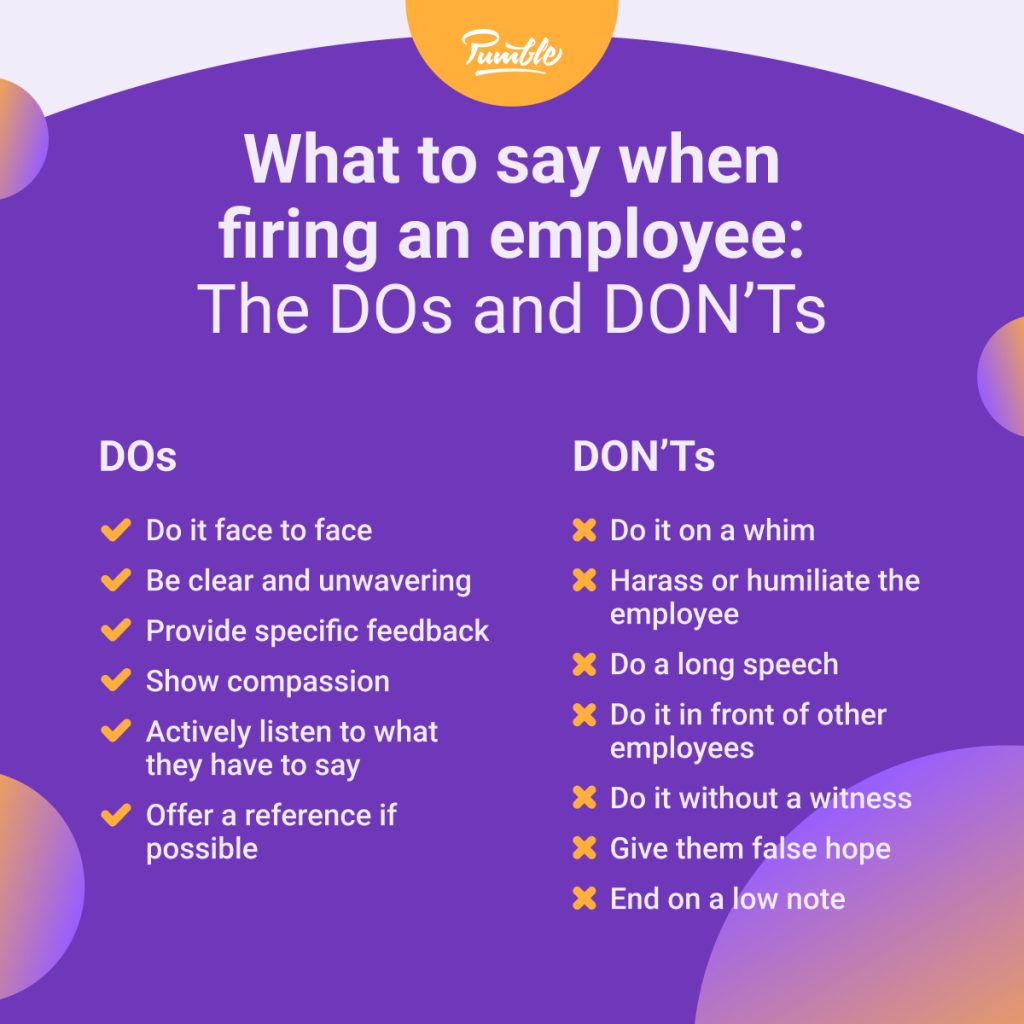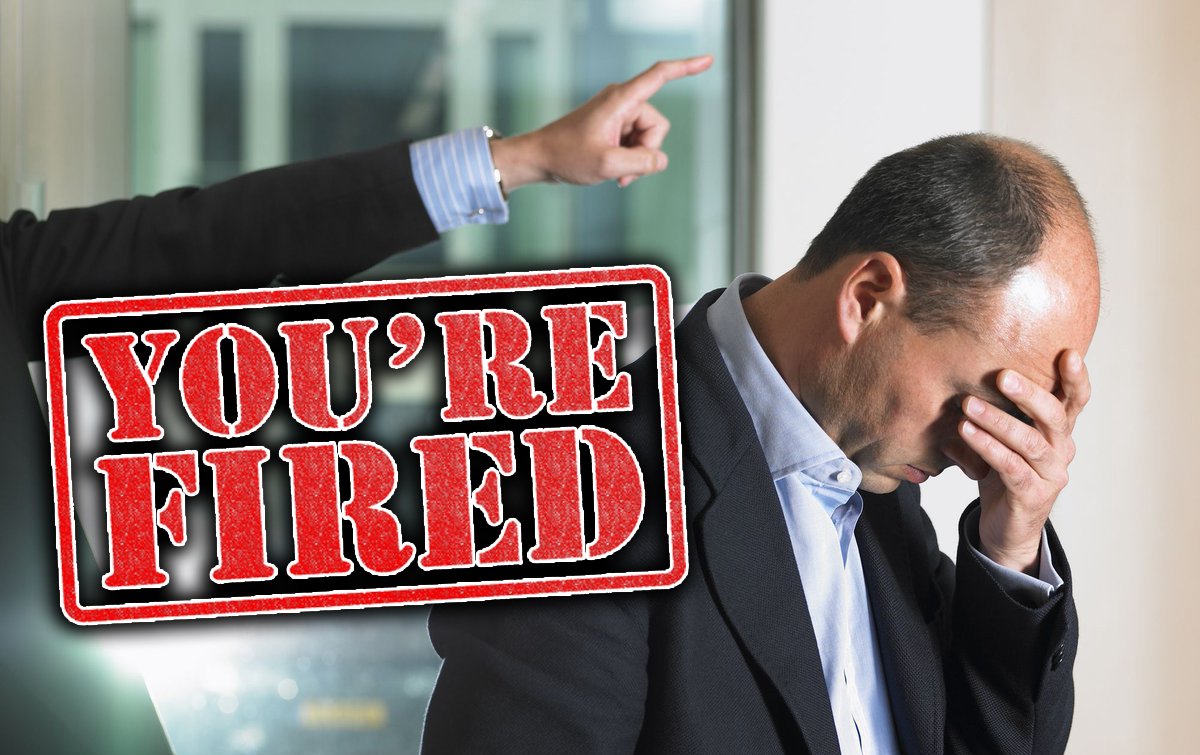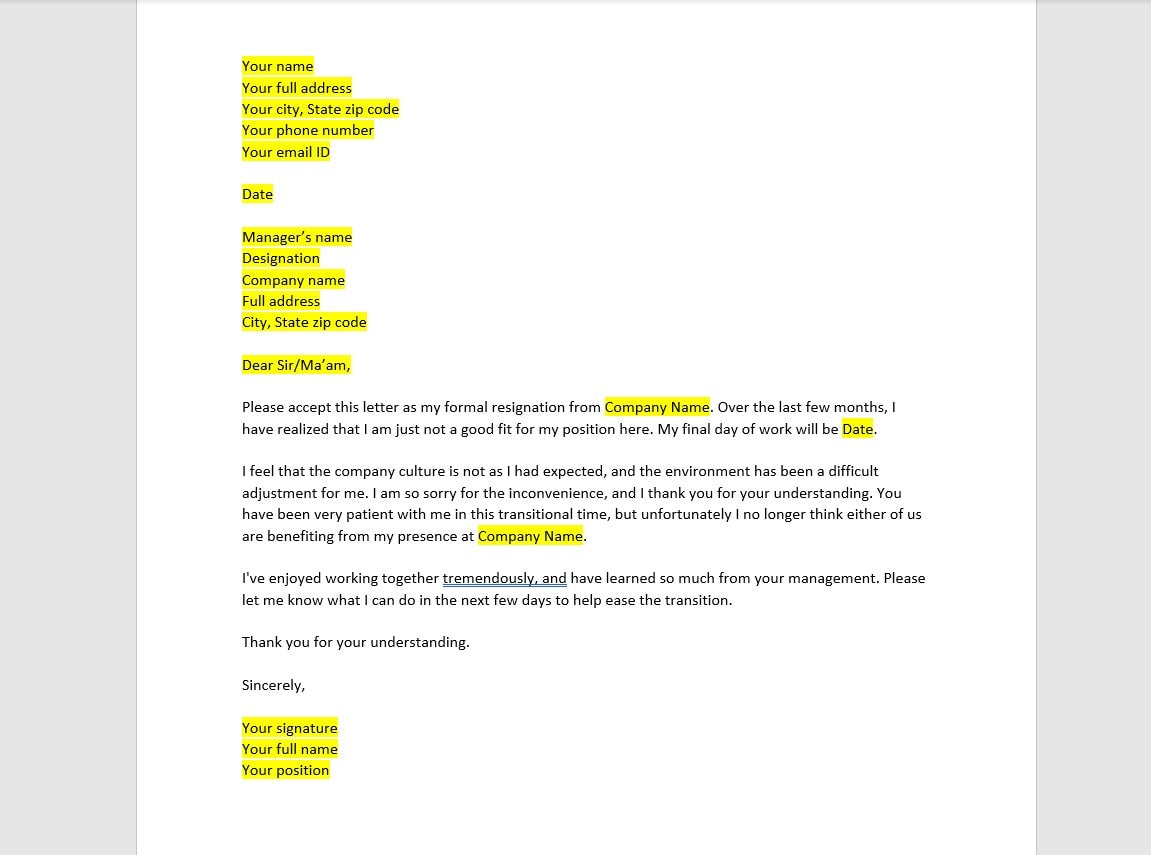Can You Fire Someone For Not Being A Good Fit

Imagine Sarah, a vibrant marketing specialist, landing her dream job at a tech startup buzzing with innovation. Weeks turned into months, yet something felt off. While her skills were undeniable, Sarah's collaborative style clashed with the company's fiercely independent culture, leaving her feeling isolated and the team slightly disjointed. The question lingers: Can a company let Sarah go, not for incompetence, but for simply not being a "good fit"?
The concept of "fit" in the workplace is increasingly prevalent, but navigating its legal and ethical dimensions is complex. This article delves into the nuanced reality of firing someone for not being a good fit, exploring the potential pitfalls and offering guidance for employers aiming for both productivity and fairness.
The Murky Waters of "Fit"
Defining "good fit" is where the trouble often begins. It generally encompasses a candidate's alignment with a company's culture, values, and team dynamics, going beyond mere skills and experience. However, this subjective assessment can easily become a disguise for discrimination, even unintentionally.
According to the Equal Employment Opportunity Commission (EEOC), employment decisions must be based on bona fide occupational qualifications and not on protected characteristics like race, religion, gender, or age. "Not a good fit" can be a dangerous phrase if it masks underlying biases related to these protected categories.
Documenting and Defining Expectations
For employers, the key to legitimately addressing "fit" issues lies in clear communication and thorough documentation. Job descriptions should explicitly outline the desired behavioral attributes and soft skills alongside technical requirements.
During the onboarding process, regularly provide feedback. If concerns arise about an employee's alignment with the company culture, address them promptly and provide opportunities for improvement.
Performance reviews should not solely focus on quantifiable metrics; they should also address soft skills and teamwork, providing specific examples of areas where the employee excels or needs development.
The Legal Tightrope
Firing someone solely for "not being a good fit" without concrete evidence of poor performance or violation of company policies is legally risky. Courts often view such claims with skepticism, particularly if the employee belongs to a protected class.
Consult with an employment attorney before making any termination decisions based on "fit." They can help ensure compliance with federal and state laws and mitigate the risk of potential lawsuits.
"Transparency is paramount," says Dr. Anya Sharma, a leading HR consultant. "Companies should strive to create an inclusive culture where diverse personalities can thrive, while also setting clear expectations for behavior and performance."
Beyond the Bottom Line: Ethical Considerations
Beyond the legal ramifications, there are ethical considerations. Firing someone for not fitting in can be demoralizing and damaging to their professional reputation.
Consider exploring alternative solutions before resorting to termination. This might include offering the employee a different role within the company, providing additional training or mentorship, or facilitating team-building activities to improve communication and collaboration.
Creating a supportive and inclusive work environment where employees feel valued and respected, regardless of their personality style, is crucial for long-term success. Fostering a culture of open communication and feedback can help address fit issues proactively and constructively.
Investing in a Better Future
Building a cohesive team requires more than just finding individuals who perfectly mirror the existing culture. Embrace diversity of thought and style, while ensuring everyone understands and adheres to the company's core values and ethical standards.
By investing in employee development, providing clear expectations, and fostering a culture of open communication, companies can navigate the complexities of "fit" while upholding ethical principles and minimizing legal risks.
Ultimately, the goal is to create a workplace where employees feel valued, supported, and empowered to contribute their unique talents, regardless of whether they perfectly fit a pre-conceived mold.



.jpg)














